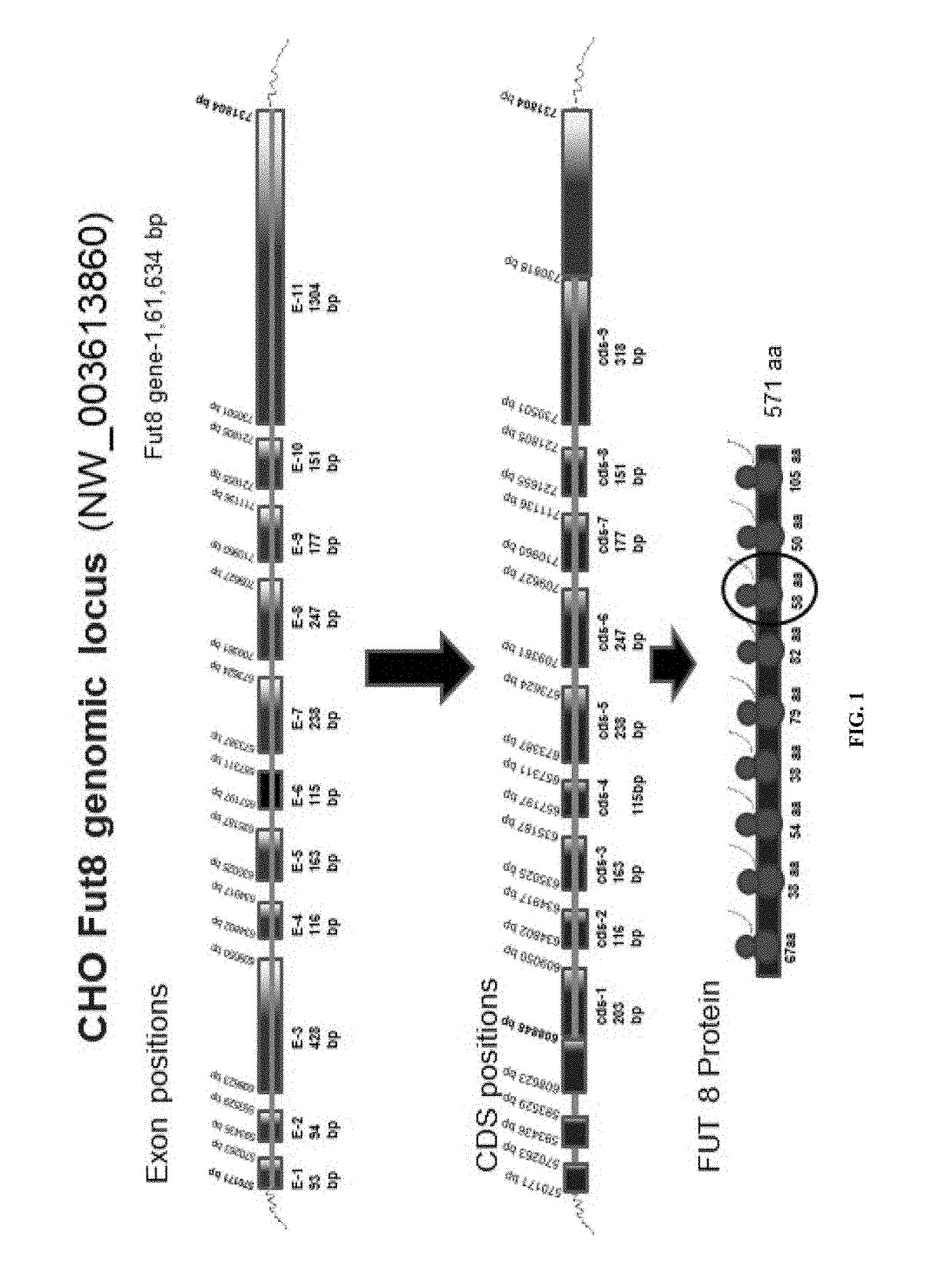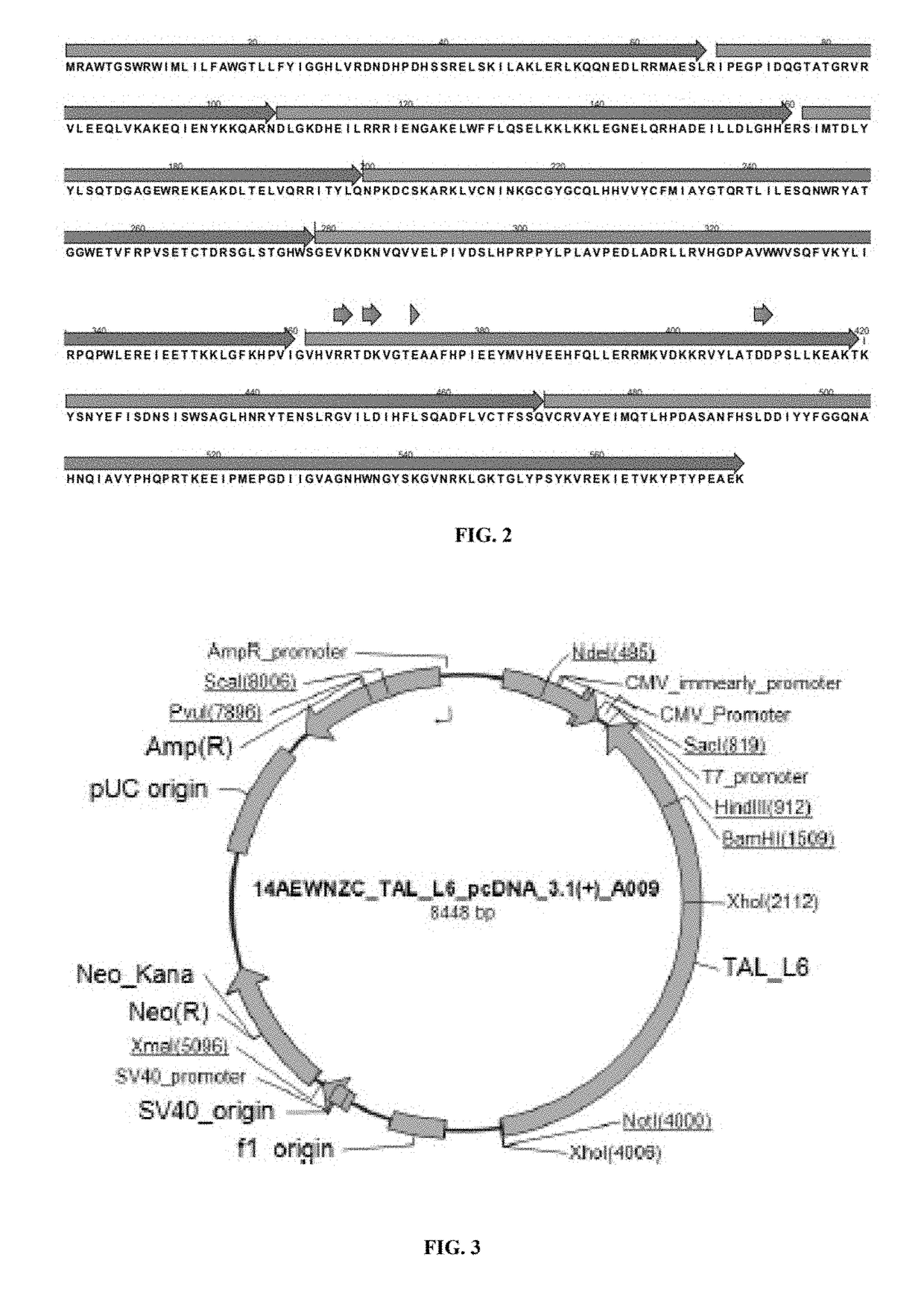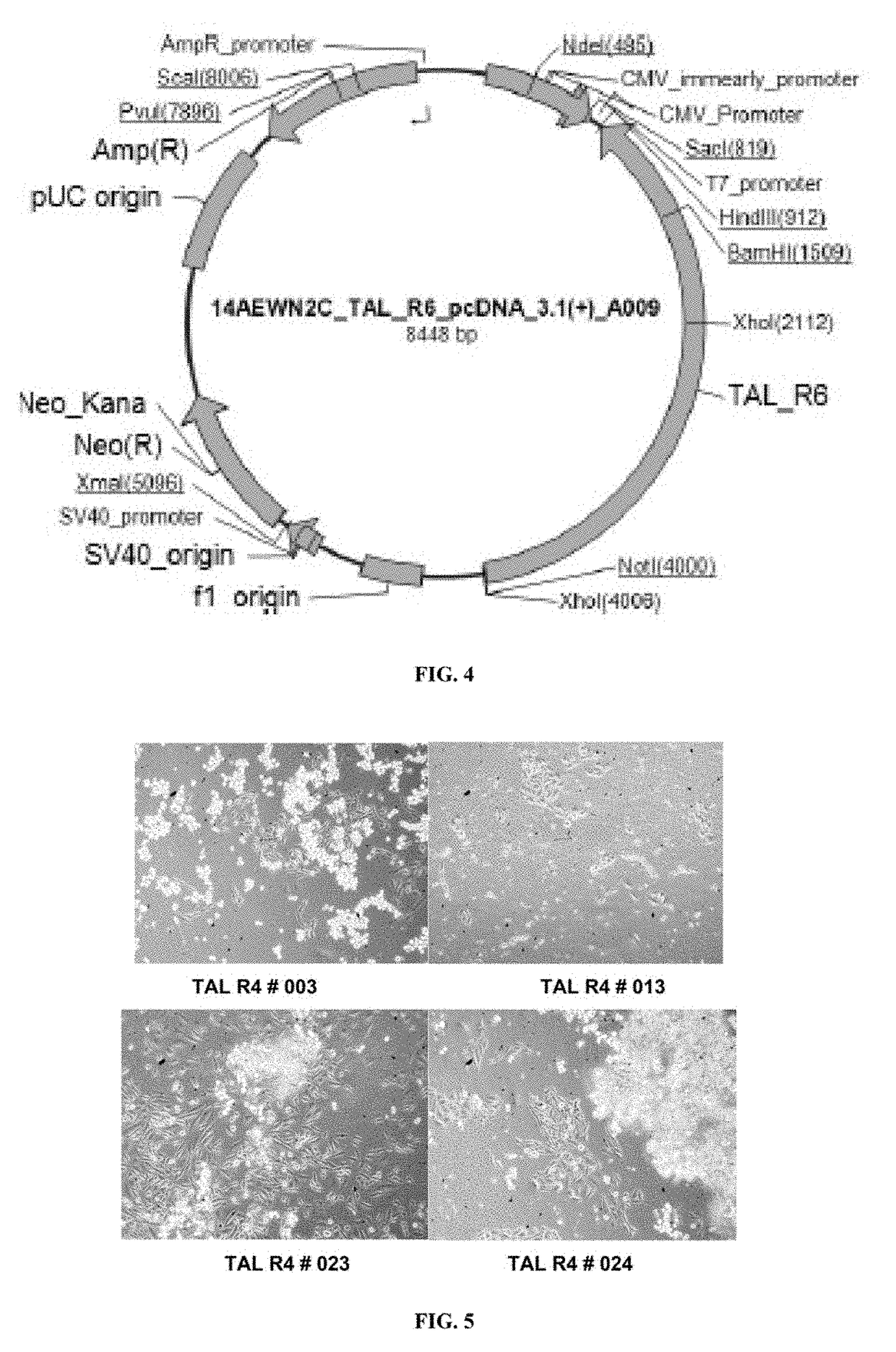Non-fucosylated protein and methods thereof
a protein and non-fucosylation technology, applied in the field of biotechnology, genetic engineering and immunology, can solve the problems of unable to meet not being able to fully satisfy the requirements of a cell line,
- Summary
- Abstract
- Description
- Claims
- Application Information
AI Technical Summary
Problems solved by technology
Method used
Image
Examples
example 1
Designing of Talen Protein
[0281]The objective of this experiment is to design TALEN (Transcription activator-like effector nuclease) for specific inactivation of FUT8 alleles.
1.1-Rationale for Targeting Specific Genomic Sequence in FUT 8 Locus
[0282]FUT8 is comprised of three domains, an N-terminal coiled-coil domain, a catalytic domain, and a C-terminal SH3 domain. The C-terminal part of the catalytic domain of FUT8 includes a Rossmann fold with three conserved regions in α1,6-fucosyltransferases; α 1,2-fucosyltransferases; and protein O-fucosyltransferases. Furthermore, site-directed mutagenesis experiment shows that several residues, which are all highly conserved in the three fucosyltransferases in this fold, are essential for the enzyme activity of FUT8.
[0283]The putative catalytic domain is comprised of two structures, an open sheet a / b structure and a Rossmann fold which is frequently found in nucleotide binding proteins including glycosyltransferases. Ten amino acid residues,...
example 2
Transfection of Cells with Talen Constructs
[0376]This example contains procedure for CHOK1 cell transfection with TALEN constructs. It also provides for selection and confirmation of single cell stable cell lines for developing FUT8 knock out CHOK1 cell line using TALEN technology, and selection of positive clones by flowcytometry based functional assay.
Transfection Protocol
[0377]Transfection is optimized using CHOK1 cells, both adherent and suspension type. Liposome and modified liposome mediated transfection reagents are tested for e.g., Lipofectamine 2000, Lipofectamine 3000, Lipofectamine LTX with Plus™ reagent, MIRUS TransIT X2, MIRUS TransIT 2020, MIRUS TransIT 293, MIRUS TransIT CHOK1 transfection kit. DNA concentration ranging from 0.5 μg to 5 μg are tested for various incubation times for e.g., 4 hrs, 24 hrs and 48 hrs. Multiple DNA to transfection reagent ratios (μg: μl) are also tested. The optimum transfection efficiency is achieved using 1:5 DNA to transfection reagent ...
example 3
Transfection of Cells with Talen Constructs Talen Transfection with High Cell Number to Improve Frequency of Talen Transfected Chok1 Cells
3.1 Transfection
[0404]CHOK1 cells are seeded at more than 90% viability and a density of 0.5×106 cells / well in a 6 well tissue culture plate and allowed to adhere for 4 hrs. pcDNA3.1-TALEN_L6 and pcDNA3.1-TALEN_R6 constructs are transfected using Lipofectamine LTX with Plus™ reagent. 2.5 μg of each DNA construct is used with 1:5 DNA to transfection reagent ratio. The cells are incubated for 20-24 hrs after transfection. Prior to transfection, DNA quantity and quality is estimated by UV spectrophotometry. A260 / 280 value DNA represents quality and protein contamination. The ratio of absorbance at 260 nm and 280 nm is used to assess the purity of DNA. A260 / 280>1.8 is generally accepted as “pure” or good quality DNA. 3-4 μl of DNA sample is placed on the micro cuvette and DNA concentration is estimated using Eppendorf Biophotometer D30 against suitabl...
PUM
| Property | Measurement | Unit |
|---|---|---|
| concentration | aaaaa | aaaaa |
| concentration | aaaaa | aaaaa |
| volume | aaaaa | aaaaa |
Abstract
Description
Claims
Application Information
 Login to View More
Login to View More - R&D
- Intellectual Property
- Life Sciences
- Materials
- Tech Scout
- Unparalleled Data Quality
- Higher Quality Content
- 60% Fewer Hallucinations
Browse by: Latest US Patents, China's latest patents, Technical Efficacy Thesaurus, Application Domain, Technology Topic, Popular Technical Reports.
© 2025 PatSnap. All rights reserved.Legal|Privacy policy|Modern Slavery Act Transparency Statement|Sitemap|About US| Contact US: help@patsnap.com



